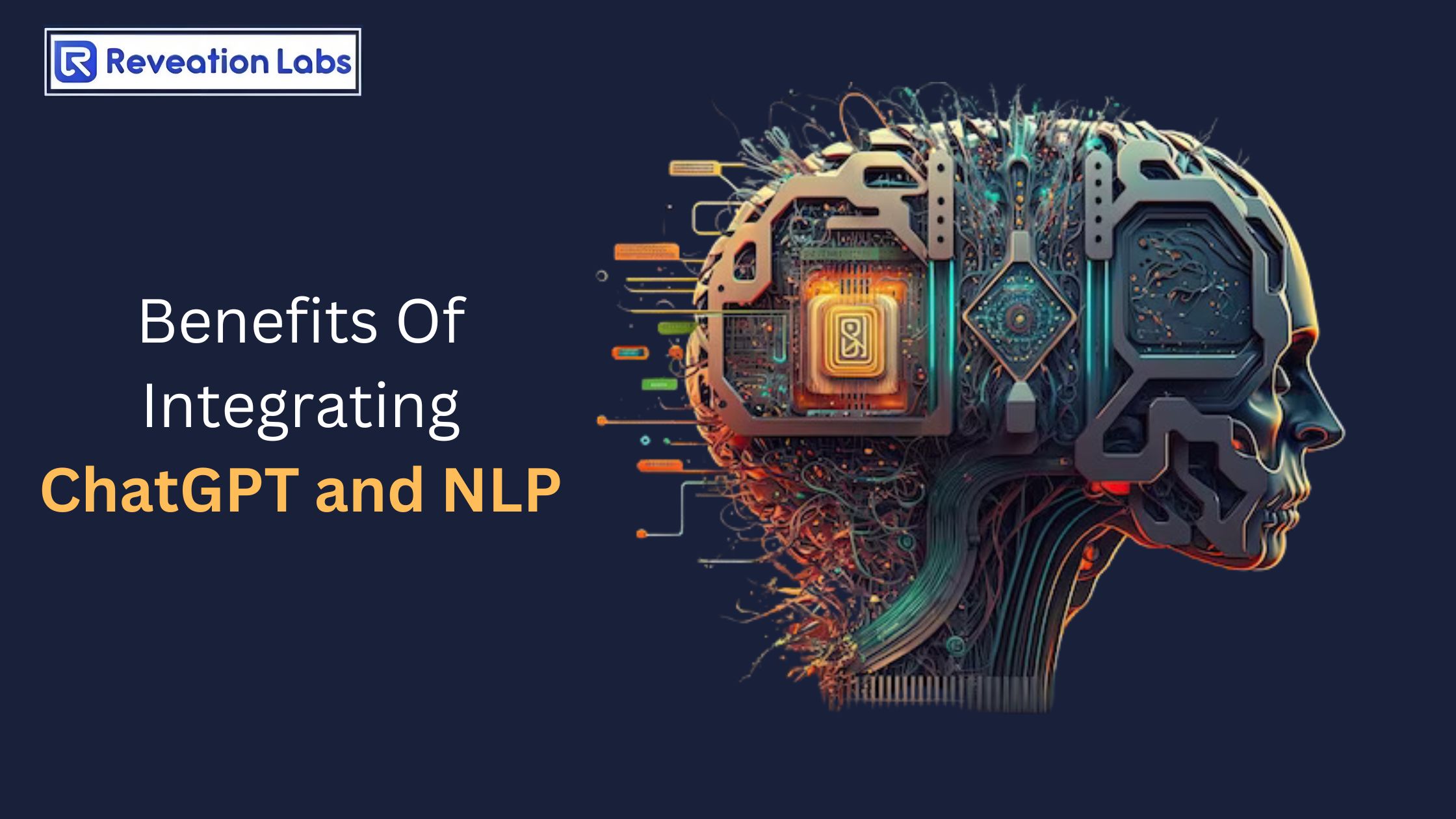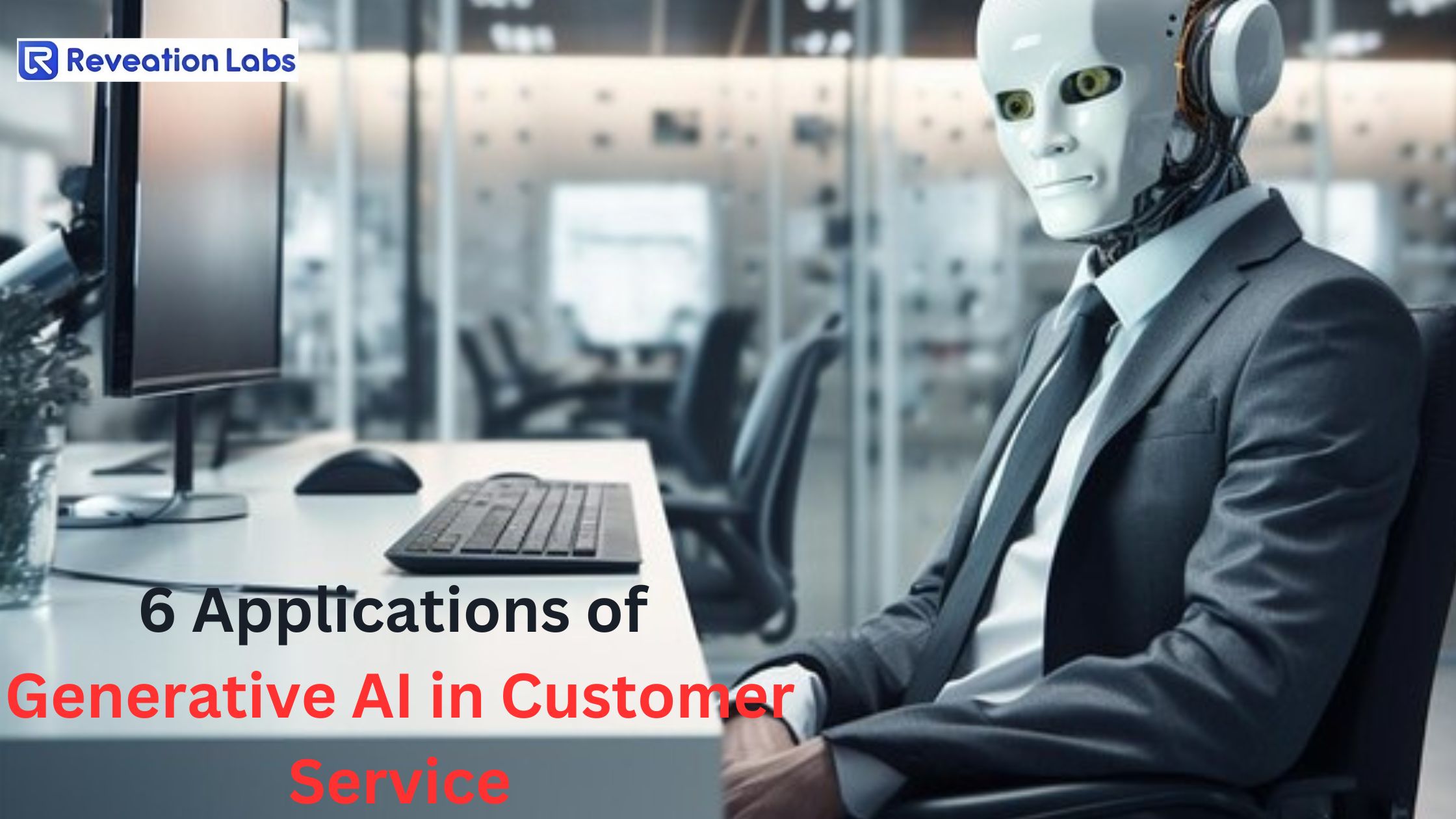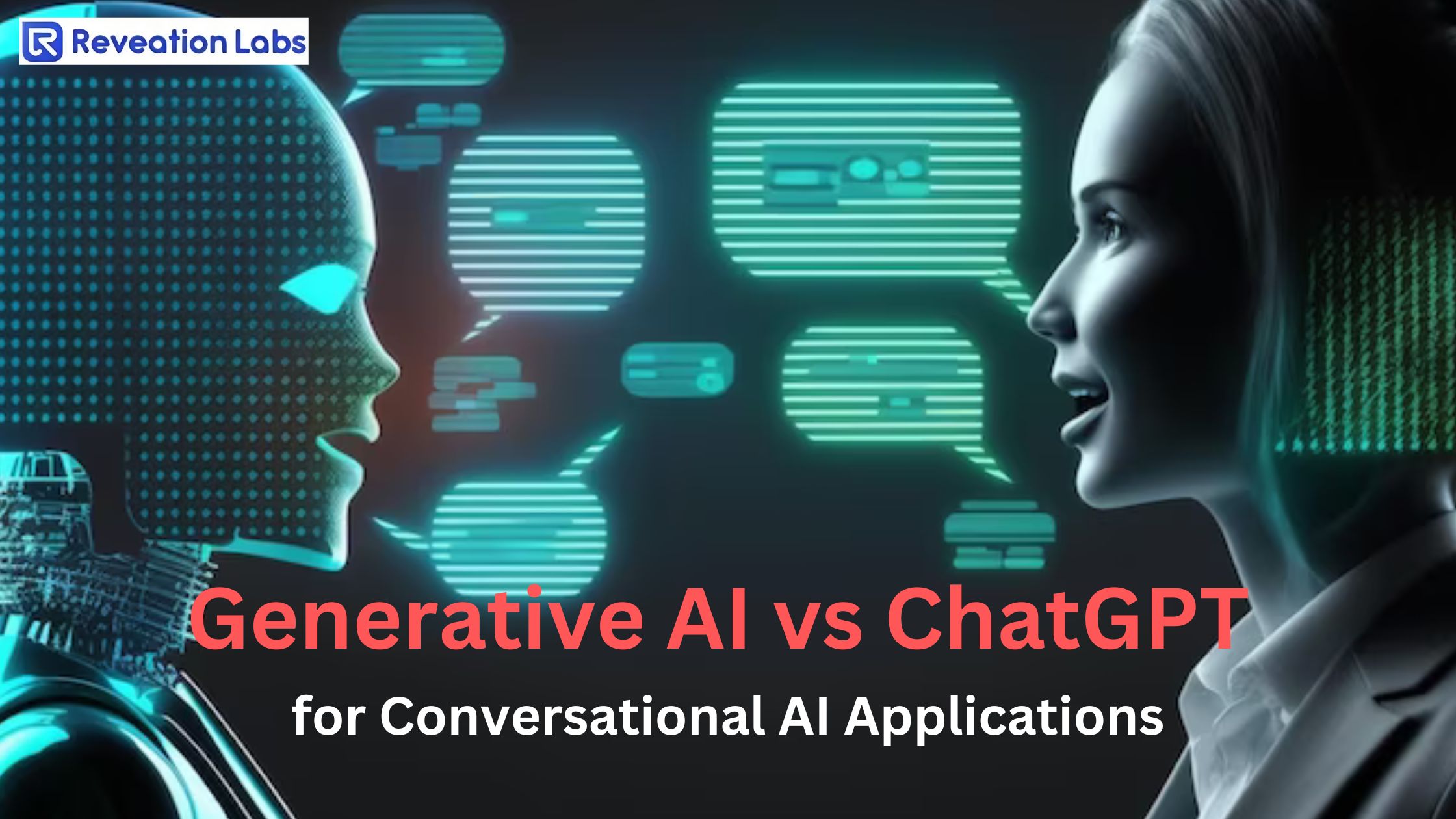komal Rathi
Thu Nov 16 2023


Imagine having a chat with your computer, and it understands you like a friend. That's the magic of ChatGPT! It's a language model developed by OpenAI, and its superpower lies in understanding and generating human-like text. In simpler terms, it's like having a virtual buddy who talks just like you do.
Why does ChatGPT matter in NLP?
Natural Language Processing is all about making computers understand and respond to human language. ChatGPT takes this to a whole new level. It's not just about getting a correct answer; it's about having a meaningful conversation. People are excited about ChatGPT because it's bridging the gap between humans and machines like never before.
The Rise of AI-Driven Conversations
In recent times, there's been a buzz around AI-driven conversational models. Think about it – from virtual assistants on our phones to smart speakers in our homes, we're increasingly talking to machines. This shift is not just about getting information; it's about having a natural, flowing conversation with our devices.
Why the Growing Interest in ChatGPT?
The interest in AI-driven conversational models is like a spark turning into a flame. We want technology to understand us better, respond in a way that makes sense, and maybe even crack a joke or two. ChatGPT is at the forefront of this revolution, making conversations with machines more intuitive, friendly, and, dare we say, fun!
In this blog, we're going to unravel the secrets behind ChatGPT and explore how it's shaping the landscape of NLP.
Contents Discussed in this Blog
Potential Benefits of Integration of ChatGPT and NLP
How ChatGPT understand context in a conversation?
How does ChatGPT handle ambiguity in language?
Does ChatGPT have a memory of past interactions?
How is ChatGPT fine-tuned for specific applications?
How ChatGPT can be used for generating code or technical content?
Potential Benefits of Integration of ChatGPT and NLP
ChatGPT seamlessly integrates Natural Language Processing (NLP) techniques to enhance its conversational abilities. Natural Language Processing (NLP) is an area of artificial intelligence dedicated to studying the interaction between computers and human language. Here's a breakdown of how ChatGPT utilizes NLP:
1. Semantic Understanding: ChatGPT employs NLP to grasp the meaning behind words and sentences. This enables the model to comprehend the nuances of language, making interactions more meaningful.
2. Language Generation: NLP models within ChatGPT aid in generating human-like responses. By understanding the structure and patterns of language, ChatGPT can produce coherent and contextually relevant text.
3. Sentiment Analysis: NLP helps ChatGPT analyze the sentiment in input messages. This allows the model to respond appropriately, whether the tone is positive, negative, or neutral.
4. Named Entity Recognition (NER): ChatGPT utilizes NLP to identify and understand entities mentioned in conversations, such as names, locations, and other important information.
How ChatGPT understands context in a conversation?
ChatGPT excels in grasping and maintaining context throughout dynamic conversations. Here's how:
Contextual Awareness: NLP models empower ChatGPT to recognize and retain context from previous messages in a conversation. This helps in providing responses that are relevant to the ongoing discussion.
Sequential Understanding: Instead of treating each message in isolation, ChatGPT considers the entire conversation's context. This sequential understanding enables more coherent and contextually informed replies.
Adaptability: ChatGPT adapts its responses based on the evolving conversation, demonstrating a capacity to adjust to shifting topics and user inputs.
Real-world Examples:
Context Retention: If a user asks follow-up questions, ChatGPT retains information from earlier messages to provide accurate and contextually appropriate answers.
Topic Transition: When a conversation shifts topics, ChatGPT smoothly transitions, showcasing its ability to understand and adapt to changes in the subject matter.
Personalization: By remembering user preferences or details shared earlier, ChatGPT creates a personalized experience, demonstrating its contextual awareness.
How does ChatGPT handle ambiguity in language?
ChatGPT showcases impressive skills in handling ambiguous queries and understanding language nuances. Here's how it navigates through these challenges:
Ambiguity Resolution: ChatGPT employs advanced language models to decode ambiguous statements. It carefully considers different possible meanings and selects the most contextually fitting interpretation.
Nuanced Understanding: The model goes beyond literal meanings and captures the subtleties in language, such as humor, sarcasm, or idiomatic expressions. This nuanced understanding enables ChatGPT to provide more accurate and contextually appropriate responses.
Adaptability in Responses: When faced with unclear questions, ChatGPT adapts by seeking clarification or providing responses that cover a range of possible interpretations. This flexibility ensures a smoother conversation flow.
Illustrative Examples:
Ambiguity Handling:If a user asks, "Can you book a table for two?" without specifying a restaurant, then ChatGPT might either seek clarification or provide general advice on making reservations, showcasing its capacity to navigate through ambiguity.
Nuanced Responses: If someone says something like "Great job!" in a sarcastic way, ChatGPT can figure it out and reply in a way that makes sense, proving that it knows the ins and outs of language.
Interpreting Idioms: If a user says, "It's raining cats and dogs," ChatGPT recognizes the idiomatic expression and responds in a way that acknowledges the user's intent.
Does ChatGPT have a memory of past Interactions?
ChatGPT's memory capabilities contribute significantly to its ability to engage in meaningful and coherent conversations. Let's delve deeper into how ChatGPT utilizes memory to enrich the user experience:
1. Information Retention and Context Preservation:
Dynamic Conversation Flow:As ChatGPT processes each user input, it retains information from prior messages in the conversation. This ensures a dynamic flow, allowing the model to refer back to earlier context and provide responses that align with the ongoing discussion.
Contextual Awareness: ChatGPT's memory is not just about storing information; it's about maintaining context. The model prioritizes recent interactions, enabling it to respond in a manner consistent with the evolving conversation.
2. Recall in Longer Conversations:
Coherence Over Time: In extended dialogues, ChatGPT's memory proves crucial. The model can recall information from several turns back, preventing responses from becoming disjointed and maintaining a coherent thread throughout the conversation.
Seamless Topic Transitions:Whether the conversation takes unexpected turns or spans various subjects, ChatGPT's ability to recall past interactions facilitates smooth transitions between topics, contributing to a more natural and engaging user experience.
3. Adaptability to User Preferences:
Personalized Interaction: ChatGPT's memory extends to user preferences and details shared earlier in the conversation. This enables the model to create a personalized experience by referencing past information, making the interaction more tailored and user-centric.
Practical Examples:
Building on Previous Queries:If a user inquires about the weather and subsequently asks about weekend plans, ChatGPT uses its memory to understand the connection between the two queries, providing responses that integrate both topics seamlessly.
Referencing User Details: In a more extended conversation, if a user mentions a favorite movie, ChatGPT can recall this information and incorporate relevant references into subsequent responses, showcasing a thoughtful and personalized interaction.
Handling Interruptions: If the user switches topics or introduces a new element after a few turns, ChatGPT's memory ensures that it adapts smoothly, acknowledging the change and maintaining coherence in its replies.
Also Read: Role of ChatGPT Integration in Boosting Your Business
How is ChatGPT fine-tuned for specific applications?
Fine-tuning ChatGPT for specific applications or industries is like tailoring a tool to suit specific needs. Developers can customize the model to excel in particular tasks or industries. Here's a closer look at how this process works and some real-world success stories:
1. Understanding Fine-Tuning:
Customization for Precision: Fine-tuning involves adjusting ChatGPT's pre-trained parameters to align more closely with the requirements of a specific use case. This customization enhances the model's precision and effectiveness in specialized tasks.
Domain-Specific Adaptation: ChatGPT Developers can fine-tune ChatGPT to understand industry-specific language, jargon, or context, making the model more adept at addressing the unique challenges of a particular field.
2. Insights into the Fine-Tuning Process:
Data Adaptation: Developers can provide ChatGPT with domain-specific datasets during fine-tuning. This allows the model to familiarize itself with the intricacies of the targeted application or industry.
Task Optimization: Fine-tuning enables developers to focus the model on specific tasks, refining its capabilities for tasks like customer support, medical diagnosis, or code generation.
3. Real-World Examples:
Healthcare Assistance: By fine-tuning ChatGPT on medical databases and healthcare literature, developers have created models capable of answering medical queries, assisting healthcare professionals, and even helping with diagnosis.
Legal Advisory Chatbots: Fine-tuned models have been deployed in the legal domain to assist with legal research, answer queries about specific laws, and provide insights into legal processes, streamlining tasks for legal professionals.
Code Generation for Software Development: Developers have fine-tuned ChatGPT to understand programming languages and generate code snippets. This has proven valuable for software development tasks, reducing coding time and improving efficiency.
Customer Support Chatbots: Companies have fine-tuned ChatGPT for customer support applications, allowing the model to comprehend industry-specific terminology and provide personalized assistance, enhancing the overall customer experience.
4. Benefits of Fine-Tuning:
Increased Relevance: Fine-tuning ensures that ChatGPT's responses are not only accurate but also highly relevant to the specific needs of the targeted industry or application.
Improved Performance: Customizing the model through fine-tuning often leads to improved performance metrics, as the model becomes more attuned to the nuances of the chosen domain.
Versatility: Developers can adapt ChatGPT for a wide range of specialized tasks, showcasing the model's versatility in addressing diverse industry challenges.
How ChatGPT can be used for generating code or technical content?
ChatGPT's versatility extends beyond casual conversations; it excels in generating code, technical documentation, and specialized content. Let's delve into how ChatGPT showcases its capabilities in technical domains:
1. Code Generation Expertise
Understanding Programming Languages: ChatGPT has a strong grasp of various programming languages, enabling it to generate code snippets in response to specific programming tasks or queries.
Problem-Solving Assistance: Developers can leverage ChatGPT to brainstorm solutions and generate code for programming challenges, making it a valuable tool for software development.
2. Technical Documentation Assistance:
Clarity in Explanations: ChatGPT excels in providing clear and concise explanations, making it a useful resource for generating technical documentation. It can break down complex concepts into understandable language.
Formatting Guidance: The model can assist in formatting technical documents, ensuring a professional and coherent structure that aligns with industry standards.
3. Specialized Content Creation:
Industry-Specific Knowledge: ChatGPT can be fine-tuned to understand industry-specific terminology, allowing it to generate content tailored to the unique requirements of various technical domains.
Efficient Content Generation: Whether it's writing articles, blog posts, or reports, ChatGPT streamlines the content creation process by generating coherent and contextually relevant text.
Suggested: How to Boost Your Content Marketing Strategies With ChatGPT?
Examples Illustrating ChatGPT's Potential:
Code Snippet Creation: Developers can ask ChatGPT to generate code snippets for tasks like sorting algorithms, database queries, or API integrations, showcasing its ability to understand and produce functional code.
Technical Explanation: Users can seek explanations for complex technical concepts, and ChatGPT responds with clear, detailed explanations suitable for technical documentation or learning materials.
Automated Report Writing: In data analysis scenarios, ChatGPT can assist in generating automated reports by interpreting and summarizing data, and presenting insights in a comprehensible format.
Learning Resources: ChatGPT can generate educational content, such as tutorials or guides, helping learners understand technical subjects by providing step-by-step explanations.
Benefits of Using ChatGPT for Technical Content:
Time Efficiency: ChatGPT accelerates the content creation process, saving time for developers, technical writers, and content creators.
Consistency: The model ensures consistency in technical content, maintaining a coherent style and structure throughout the generated material.
Versatility: ChatGPT's adaptability makes it suitable for a broad range of technical applications, from coding assistance to document generation and educational content creation.
Conclusion
In summary, ChatGPT has proven itself as a breakthrough in Natural Language Processing (NLP), seamlessly integrating language understanding and context retention. Its adaptability, from handling ambiguity to generating technical content, showcases its versatility beyond traditional conversational roles.
Looking ahead, the future of conversational AI promises continued refinement and expanded capabilities. Anticipated advancements include enhanced contextual awareness and the development of more empathetic interactions. As developers fine-tune ChatGPT for specialized applications, we can expect tailored solutions that redefine how we engage with AI, ushering in a new era of intelligent and empathetic digital communication.
Why Reveation Labs
We are a team that is technically proficient and simultaneously caring for your business. Our ideology is to provide the latest technologies that suit your business well.
Let’s discuss your requirements!
Give your business the next-gen technology it deserves. Be a part of our family of successful enterprises that work on high-end software solutions.
Experts
In all the latest technologies and developments.
Creative
To innovate the best solutions and pick the right technology for you.
Ethical
To always put you first & respect your business values and procedures.
Dedicated
To meet the deadlines and help you until the very end and beyond.
Approachable
For all your business needs and queries at any point of time.
Transparent
In our ways of working.





